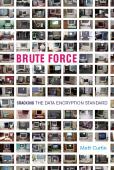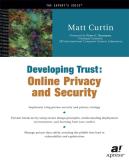Name That Hacker
Should you return to the year 1995 and visit the AT&T building at 6200 E. Broad St. in Columbus, Ohio—known within the company as “CB”—you'd find me working there. Pretty much any time, day or night, I'd be there, happily hacking away on some piece of code or otherwise ensuring that Very Important Computers were properly going into production and getting the requisite care and feeding. That building had some interesting goings-on at the time and also some interesting history, being the site where “CB-Unix” was developed, a version of the Unix operating system intended for production (rather than research) systems—at least as long as they were DEC 11/70 hardware. Features developed in CB-Unix proved to be important to the overall development of the Unix operating system, bringing new features to the operating system and serving as foundation for later versions. In 1995, there were still people there who worked on some of those things like CB-Unix, Unix/RT, and MERT.
Within AT&T, Bell Labs was sometimes known to outsiders as “the country club” because we could actually do things like travel to do work in exotic places like New Jersey, instead of using the videoconference system. Several times, I was taken into the sacred ground of Murray Hill, where the original Unix got developed, and a lot of other very interesting things happened. Working at Bell Labs was great; it was the kind of place where people who were recognized for doing amazing things were actually doing amazing things. Seeing the work going on there was great incentive to keep from sitting back and basking in one's own brilliance. Even those of us who went through life being the smartest guys in the room realized that Bell Labs was the kind of place where we really had to be on top of our game if we were going to get anywhere. People who got recognition there weren't getting just the service anniversary watches and the like; from time to time, they would win something like the Nobel Prize.
At least in the world of computing, researchers and engineers had managed to develop a rather particular look. Not everyone wore it, of course, but it was common enough that it would become a means by which Unix users were identified. It might well have started with some of the original Unix developers, such as Ken Thompson, Brian Kernighan, and Dennis Ritchie, but it certainly didn't end there.
Aside from the older guys (the “graybeards”—sages who had been there and probably bore titles like Distinguished Member of Technical Staff) continuing in their work and still in the company, there were plenty of younger people coming filling in those ranks. But the graybeards were always interesting to find, not so much because they knew the answers to questions that we might pose (though they often would) but because they had developed a good sense of how to move successfully through difficult territory with little guidance. Having someone like that to bounce ideas around over lunch is invaluable.
Sometimes, an unknown graybeard would be spotted occupying a vacant office, walking down the hall, or in the washroom. A game developed in response to such sightings: Name That Hacker. A bit of sniffing around and some casual inquiry would often lead to an introduction to a tremendously interesting and accomplished people.
* * *
One day, my friend and colleague Brian said that he spotted a new graybeard that we had to identify. “He's shorter than Curtin, has a T-shirt that doesn't fit quite right, has hair to his shoulders, and a flowing beard. He has to be someone famous.” Other colleagues and I nodded to this bit of wisdom. We were at Bell labs, after all, and the odds were not bad for someone as famous as this graybeard. He was born to play the part, handing out nickels to people in need of real computers.
Thus began a new round of Name That Hacker. Brian just saw him walking down the hall, catching neither his origin nor his destination. Without anything more than “last sighting somewhere on G aisle of building 1” and a physical description to go on, there was some chance that it would take us some time to find him again. Were he visiting from another facility, we might not find him before he was to head back.
A few days later, word spread through our group of another sighting up near A aisle. We trekked through the hallways, claiming to be on our way to fetch coffee, while actually on the lookout for the famous guy whose name no one knew. Our search was mostly in vain: we found only the coffee.
The following week, Brian and I were working on a different game that was all about beating the odds. One of us would buy items from the top shelf of an overstuffed vending machine, with the objective of hitting things hanging over the edge of lower-level shelves while the other would try combinations on the locked door opposite the vending machine. Beyond the door was a computer lab (and something of a shortcut back to our offices). We weren't trying completely random combinations—Brian had a theory about how they worked which translated into a method for trying the most likely combinations first. (We pretty routinely bested the vending machine but I don't think that we ever cracked the combination to the door lock.)
While I tried to unlock the door, Brian collected the item that he bought and the “bonus prize” that came with it. Brian's eyes grew wide with excitement when he looked past me, further down the hall. He started to run and I followed, knowing that we were back to Name That Hacker and that sighting number three had just taken place.
Brian and I traded disappointed looks as the famous guy whose name no one knew came out of one of the offices and pushed the mail cart down to the next door, where he dumped off the next packet of incoming mail. We were reminded of a saying about the futility of judging books by their covers and somehow never got around to playing Name That Hacker again.

